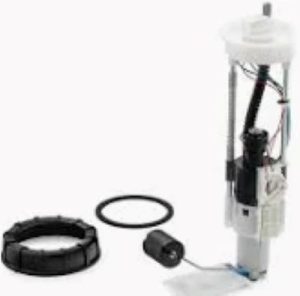Fuel pumps and fuel injectors are responsible for just the right amount of gasoline making it to more modern engines enough to burn properly. The fuel pump is responsible for pushing gasoline from the fuel tank to the fuel injectors at a specified pressure, usually between 30 and 80 PSI depending on vehicle make. Its purpose is to apply enough force that the fuel injectors can properly atomize the gasoline, spraying it in a nice mist so when ignited lets our engines burn cleaner and more efficiently.
Most setups will typically see the fuel pump holding a consistent level of flow or around 200 LPH in standard vehicles this may range more than likely over 400 liters per hour depending on high performance engines. Fuel is sent from the fuel pump to the injectors via fuel lines and electrically controlled by ECU (Engine Control Unit). The Engine Control Unit also uses information from sensors like the oxygen sensor and throttle position sensor to vary timing and injector pulse width. At high RPM, to meet the increased power demands of combustion and trying to send a balance signal from your ECU side (Driving chip), it tells injectors linear wide open time longer.
Into fine particles an atomize of the fuel with their precise nozzles, these being fuel injectors. The smaller the particles, the more air mixes with fuel for a better combustion process. Atomization is so important, in fact, that automotive industry pundits claim it can raise fuel economy by as much as 10%, making healthy injectors a key player on the efficiency field. Often, advanced nozzle designs developed by top-shelf brands like Bosch or Denso who have a rep for producing some of our favorite fuel injection components are also tapped to produce nozzles that atomize diesel more effectively — and modern sophistication benefits your car both in terms of performance and overall mpg.

This results in either too little or too much pressure because a malfunctioning fuel pump breaks this normal flow. If the pressure is too low, then you will have a lower volume of fuel coming out and this causes leaner air-fuel mixtures that in turn cause misfires or overheating. Conversely, too much pressure can push fuel just right into the combustion chamber to stretch a rich mixture that is high in emissions and low in efficiency.
Fuel pressure regulators — the only way to control fuel pressure between the pump and injectors. Fuel pressure regulators are another safety features that regulates fuel pressure to keep it within a certain range (typically 40-60 PSI) for accurate and dependable delivery. Uneven fuel injector operation causes pressure fluctuation without a well-functioning regulator Fuel Pump and fuel system components maintenance is essential orchestrate the pump with injectors, providing optimal engine output according to any circumstance.